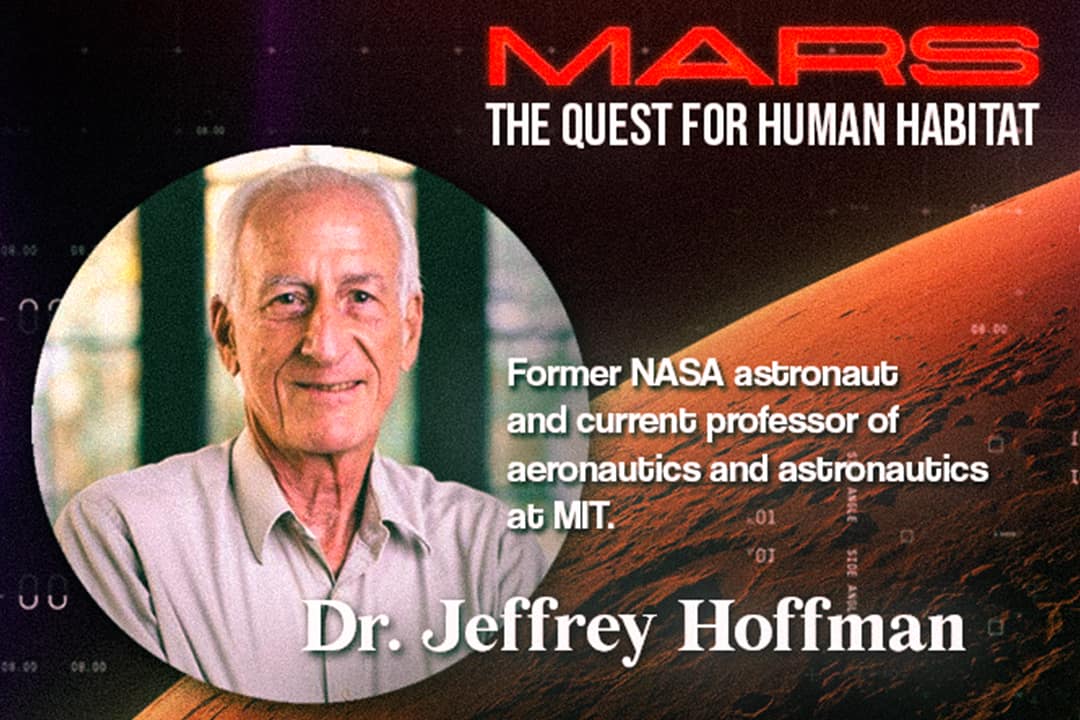In the realm of space exploration, the use of both robotic and human endeavours has been pivotal in expanding our understanding of the cosmos.
On February 9, U of T’s Astronomy & Space Exploration Association held its 20th Annual Symposium in the Mechanical Engineering Building on the St. George campus. This year’s theme was “Mars: The Quest for Human Habitat.” At the symposium, Jeffrey Hoffman — a former NASA astronaut and currently a professor of aeronautics and astronautics at Massachusetts Institute of Technology — discussed the use of rovers on Mars for geological experiments and the constraints faced by researchers.
Many robotic missions carried out by NASA, especially by Mars rovers like Perseverance and Curiosity, have demonstrated remarkable capabilities in exploring distant planetary bodies. These rovers, equipped with sophisticated scientific instruments, have provided invaluable data about the Martian surface, atmosphere, and geological features. However, despite their successes, rovers often operate at a fraction of their full potential due to several constraints.
Limitations of remotely-managed rovers
As Hoffman discussed, taking humans to Mars involves supporting astronauts for seven to eight months aboard a suitable spacecraft. The red planet’s air pressure is similar to Earth’s pressure — at 100,000 feet above sea level. Water does not exist as a liquid at this level, and altogether, this makes Mars very difficult for humans to explore. Rovers allow scientists to study places they cannot physically reach yet.
The speed that rovers work at, the limits of human intervention from laboratories on Earth, and their costliness are all significant restrictions to the capabilities of these machines. A rover operation generally involves a large team of scientists and engineers analyzing data and making decisions concerning the next steps for data collection, which is very time-consuming and costly — it takes about a day and a half for signals to be sent between the rover and Earth and millions of dollars for each launch.
Hoffman mentioned a quote by Steve Squyres, the principal investigator for two other rovers, Spirit and Opportunity, saying: “As a field geologist, if I’d been in a spacesuit on Mars, I could’ve done what my two rovers did in the course of a long weekend.” Plus, each of these missions intakes a huge amount of materials and consequently releases equivalent, or larger, amounts of emissions.
The cautious approach to operating rovers stems from the risks involved in their missions. Rovers must navigate challenging terrain, avoid getting stuck, and withstand harsh environmental conditions without obtaining damage that would require human involvement to be repaired. For instance, if a rover were to get stuck in the sand, there would be no one there to dig it out. Therefore, the rovers’ teams on Earth carefully navigate these machines across the Mars terrain and around rough surfaces, dragging their capabilities far below their true value.
A bit of MOXIE to get humans on Mars
Hoffman is the deputy principal investigator of MOXIE, an experimental rover instrument on Perseverance, the rover that was launched in 2020. The Mars Oxygen In-Situ Resource Utilization Experiment can create up to 10 grams of oxygen per hour using carbon dioxide in the Martian atmosphere. It splits oxygen from the carbon dioxide using an electrolyzer.
MOXIE was created as a source of oxygen for future explorers on Mars to breathe and burn as fuel. It’s a small-scale demo version of a converter that will eventually support a small crew. As Hoffman said, “MOXIE was put there to study MOXIE.” By including MOXIE on the rover, NASA was able to confirm that we can make oxygen on Mars.
Hoffman proposed that human presence on Mars could enhance the efficiency and effectiveness of exploring and understanding the environmental conditions of Mars. Humans can operate in real-time, allowing for immediate problem-solving and decision-making. As mentioned before, humans can also intervene whenever a rover encounters a blockage, increasing the machine’s lifespan and range of exploration.
Moreover, humans on Mars could facilitate the rapid implementation of new experiments or upgrades to rover equipment. This would enable rovers to be updated with respect to ever-evolving scientific priorities and technological advancements, maximizing their scientific output and greatly benefiting the development of scientific research in space.
Hoffman hopes that space discovery techniques will be developed in the upcoming years to enhance space exploration and find a more efficient means of data collection and analysis. Uncovering the wonders of the cosmos will depend on combining robotic and human efforts as we push the boundaries of space exploration.



No comments to display.